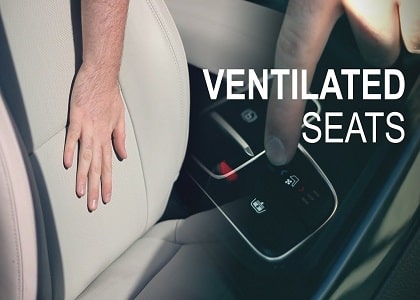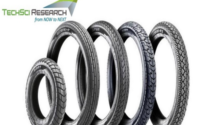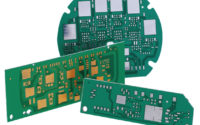Ventilated Seats: Next Generation Technology for Automotive Temperature Control
Technology and ergonomics are combining in new-gen cars to take the riding experience the next level. Personalized automotive temperature control can also help in saving energy and increasing fuel efficiency.
If you spend long hours driving the car, you would like to make the journey as comfortable as possible. Heating, Ventilating, Air Conditioning (HVAC) systems in cars seem no less than a blessing during the hot and humid seasons or cold temperatures that provide instant relief from the extreme temperatures. However, conventional air conditioning systems have some serious limitations. Since the air conditioning requires energy from the car’s engine for operating, refrigerating the interiors of the car can cost additional gasoline unless you are driving an electric car. Not only the excess fuel consumption increases your expenses, but the carbon emissions resulting from the HVAC systems add to global warming. According to a study, air conditioners can decrease a car’s fuel efficiency by 21-24% and increase carbon emissions by 120% over normal levels.

Despite the serious drawbacks, air conditioning and heating have become an absolute necessity to ensure a comfortable experience while driving. However, there are better alternatives for maintaining an optimal temperature in your car while minimizing fuel consumption and cutting down carbon emissions. That is where ventilated, cooled, and heated seats come into the picture. Many automobile manufacturers have started installing ventilated seats or seat ventilation features designed to provide a cooling sensation. While heated seats have been around for quite some time, cooled seats have become an increasingly popular option as they tend to blow the refrigerated air directly onto the seats, enhancing convenience for the driver and other occupants. The luxurious feature of ventilated seats is not limited to only luxury cars as companies like Jeep, Dodge, Hyundai, Chevrolet, and Lexus have gone out of their way to make sure car buyers enjoy heated and cooled seats at affordable prices.
How Do Ventilated Seats Work?
The inbuilt ventilated seats function through small fans in the seat cushion and backrest that draws air from inside the cabin and into the seat. Since the car seat is made up of porous mesh, the air can easily flow through it. The diffusion layer helps to evenly distribute the unrefrigerated air throughout the seat and outwards, thus delivering a cooling effect to the driver. Even the unrefrigerated air can help to keep away the body’s heat and cool the car seat. Some vehicles provide the flexibility of adjusting the fan speeds in the seat ventilation as per convenience. The fans start at the highest speed when switched on in the beginning, but one can always select to reduce the fan speed at any time. The ventilated seats can reduce sweating and dry out the moisture between your body and the seat and reduce the temperature of seats when the car is parked under the sun. The ventilated seats can be used with heated seats during cold weather to make the seats warm and cozy. Ventilation can be found mostly on the driver’s seat or front seats of the car. However, some luxury cars also provide ventilation seats at the outer rear ends, which can be operated via separate control for each seat for independent ventilating.
Air-conditioned seats utilize a small cooling element or air pumped from the main cooling element of the car’s air conditioning system to provide refrigerated air to the occupant. While a standard car seat may block the body’s built-in cooling system, the porous covering of an air-conditioned cushion allows the body to eject heat through your pores in the form of water vapor, which creates sweating when you press back against the body. As the cooling is restricted to the seats rather than the entire interior of the car, the ventilation process would require less energy than powering up a light bulb. Thus, refrigerated or cooled seats are an affordable and convenient way to keep yourself cool and save the Earth’s atmosphere with reduced energy consumption.
Ventilated Seats Changing the Auto Experience
People who live in extremely hot regions must have experienced horrible burns after sitting on a super-heated upholstery of the car that has run for the whole day or standing under the sun for far too long. However, ventilated seats can scale up your auto experience by providing supreme comfort even during high temperatures. While conventional HVAC systems force everyone to enjoy the same temperature, the independent cooled seats allow an individual to control their temperature requirements at any given time. Besides, the driver and occupants do not have to worry about the problematic stains caused by the sweating as the cooled seats apply refrigerated air directly to your body. If the individual does not feel like using the cooled seat feature, he/she can simply use the ventilated seat for the cooling sensation that can help one feel better without using air conditioning. Moreover, cars with in-built ventilated cushions can help to prevent additional costs that may result in additional expenses.
Upcoming Innovations in Ventilated Seats
- Moisture-Sensing Seat Technology
Ford has issued a patent for moisture-sensing seat technology that detects moisture in the seat using the liquid-permeable seat covers and regulates the climate control accordingly. The ventilation system automatically adjusts the seat to comfortable dryness when the moisture sensor located within the seat senses liquid. The multiple liquid-permeable opening in the seat cover allows liquid to seep through the sensor, which indicates the presence of the wet-seat condition. So, if the occupant is sweaty on a really hot day, the seat will know and automatically switch on the seat’s ventilation system. On a snowy day, if you open the door and some snowfalls over the seat, the heating system would again stimulate the ventilation system to make the seat dry enough.
- Liquid-Cooled and -Heated Seats
Tesla has filed a patent application for liquid-infused seats that could help provide heating and cooling without the use of electric current. Since ventilated seats require power in electric cars to run fans that push air away to provide the cooling effect, Tesla has envisioned liquid that cools and heats seats, which could save a lot of power. The new design involves multiple layers within the driver’s seat where the driver sits on the top layer, while the second layer consists of intermediate fluid circulated via pump to evenly distribute the air throughout the seat bottom and seat back for even heating and cooling. To prevent seats from bursting the intermediate layer and possible leakage, Tesla has planned to add supports and conduits throughout the system. The new technology would not only enhance passenger comfort but also enable the cooling systems to operate more quietly. Plus, the big energy-saving advantage of the new technology comes as a big bonus.
- Massaging Seats
Massaging seats are more a function of luxury; therefore, the feature is available in hi-end car models such as Mercedes-Benz S-Class, Ford F-150, etc. The advanced automotive seat feature can help the driver or other occupants to reduce their fatigue and soreness during long drives. Manufacturers like Honda, Toyota, and Ford are incorporating massaging chairs in fleets of thousands of commuter cars every year. However, cost might become an issue due to added maintenance bills for massaging automotive seat.
According to the TechSci research report on “Global Automotive Ventilated Seats Market By Technology (Standard, Powered & Heated and Massage), By Vehicle Type (Passenger Car & Commercial Vehicle), By Material (Fabric, Genuine Leather & Synthetic Leather), By Sales Channel (OEM & Aftermarket), By Region, Competition, Forecast & Opportunities, 2026”, the global automotive ventilated seats market is anticipated to grow at a CAGR of 6% during the forecast period. The growth can be attributed to the rising demand for comfortable and luxurious seating features and growing awareness about the vehicular pollution leading to the development of innovative technologies in automobiles.
According to another TechSci research report on “Global Automotive Seats Market By Technology (Standard, Powered & Heated and Massage), By Vehicle Type (Passenger Car & Commercial Vehicle), By Material (Fabric, Genuine Leather & Synthetic Leather), By Distribution Channel (OEM & Aftermarket), By Region, Competition, Forecast & Opportunities, 2026”, the global automotive seats market is expected to grow at a CAGR of around 4% by 2026, owing to the surging demand for comfortable and luxurious seating features. Moreover, increasing need for lighter vehicles with high efficiency as well as booming automotive industry is expected to fuel the global automotive seats market in the coming years.



